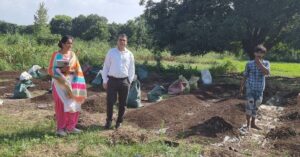Kerala Youth Turn Dumpyard Clogged With Trash For 20 Years Into Lush Fields!
The 1990s saw a drastic shift of the villagers from farming to other professions. Farming yielded low profits, groundwater levels were severely depleted, and the pH value of the water was considered unsuitable even for drinking purposes.

Situated on the banks of the river Periyar, lies the tiny village of Choornikkara. It is home to 35,000 villagers and surrounded by the three municipalities of Eloor, Aluva and Kalamassery.
Two decades ago, this village was known for its lush green paddy fields like Chavaru Padam (Padam is ‘paddy field’ in Malayalam), Muthiri Padam, Katte Padam, and many more.
However, it was only a matter of time until this village fell prey to urbanisation.

The 1990s saw a drastic shift of the villagers from farming to other professions. Farming yielded low profits, groundwater levels were severely depleted, and the pH value of the water was considered unsuitable even for drinking purposes.
Most paddy lands were filled up and restored except two—Chavaru Padam and Katte Padam.
Located on either side of the highway with a distance of a 100 metres between them, these paddy lands were turned into cesspools of sewage. Deemed irreversible for farming, filth from toilets, factories, butcher shops turned them into wastelands.
For more than 22 years, the 200-acre Chavaru Padam was a smelly place, and passersby would scrunch their noses up in disgust or hold their breath, while walking past it.
Today, things have considerably changed. More than 30 acres of Chavaru Padam and 15 acres of Katte Padam have been converted into a green haven of paddy fields.
And this is all thanks to a group of 18 youth volunteers from a group called Adayalam.
In an exclusive interview with The Better India (TBI), Ansar TM, the 33-year-old president of Adayalam, recalls the journey.
The idea of returning the wasteland to its former glory took root in 2008 when the group approached the local Krishi Bhavan and panchayat officials.
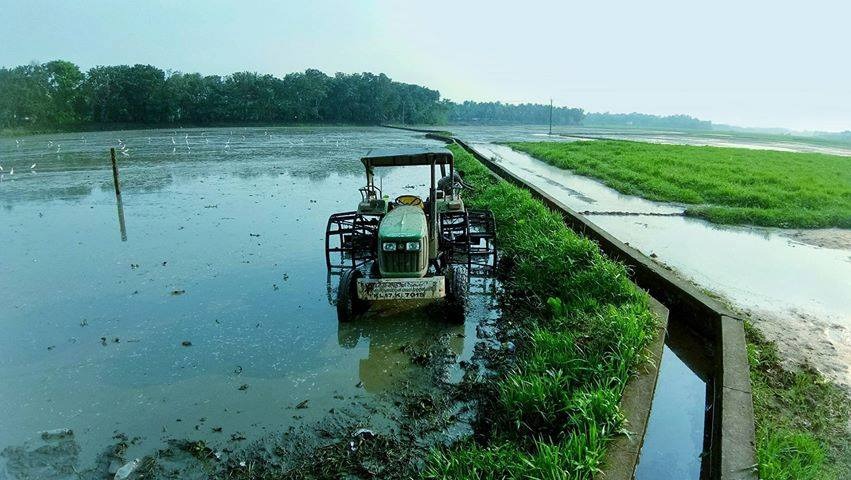
The authorities alerted them that Chavaru, spread across 200 acres, belonged to dozens of small landowners, do any action would require their consent and cooperation.
“When we summoned our first meeting, 150 landowners turned up. But by the second meeting, this number dropped to 100, and by the third, only 15 landholders showed up. Thus, we could sow paddy in only 1.5 acres at Chavaru Padam. It wasn’t much, but it was certainly the beginning.”
Challenges
The land had become entirely hostile to paddy or any crop. Toilet waste, refuse from the poultry farms, and butcher shops and piles of plastic clogged it.
Just clearing that waste cost them Rs. 1.5 lakh and many days of work.
“We borrowed money from several people. Three JCBs (excavators) worked five days. Two tipper trucks made several trips to remove the waste. Once cleared, we filled water in the plot. This water was sourced from the main irrigation canal.”
This wasn’t easy either. Two decades of no farming had rendered the small sub-canals of the main canal defunct. Besides, the canal which once measured two meters wide had become very narrow owing to encroachments and waste dumping. Toilet waste from surrounding areas had blocked sub-canals too. They had to first clean up the small irrigation canals before bringing water from the main canal.
“Once the land was ploughed, we filled it up with water and then drained it out. This helped cleanse the saline soil of the toxicities. We also tested the water from the wells nearby, where the presence of E.Coli and coliform bacteria was alarmingly high. After the first phase in our experiment though when the groundwater was tested, the quality of water drawn from many wells in the locality had improved.”
An example of this is a well belonging to the former panchayat president. Its water had become so toxic that it remained covered for decades, but today, it is a source of drinking water.
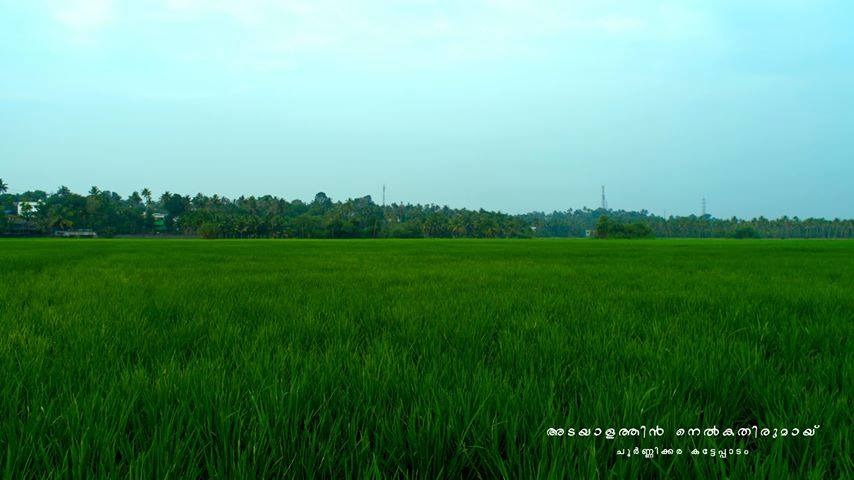
What was manually one of the biggest challenges was that the 17 volunteers were all working professionals who had different jobs. They spent hours in the morning before work and evening after work and gave up their holidays too for the success of the paddy project.
And though the hopes were high, the project was discontinued due to many factors until it picked speed up in 2015.
Adayalam was registered as a formal organisation, and the 17 members joined hands yet again to restore Chavaru Padam.
They submitted a detailed proposal to the panchayat committee. This time around they got consent letters from more landowners.
In the first year, they brought 15 acres of Chavaru Padam under cultivation, and there was no looking back. In the second year, this increased to 30 acres and later adding another 15 acres of Katte Padam, the group has been able to convert 45 acres of wasteland into lush paddy fields.
“We received a lot of support from the Panchayat and Krishi Bhavan, and the state government subsidised 89 per cent of the total expenses for salvaging the wasteland. We are happy that we could return the favour to the people after the successful harvest.”
Adayalam distributed the first harvest to 9,000 ration card holders in Choornikkara panchayat at Rs 35 for Rs 2/kg in 2017, shared one-fourth of the total profit to the landowners. Over the next two years, this amount became one-fifth of the total profit.
“We may have to bring the share to one-sixth this time because the government subsidies would be reduced as the land is now considered paddy land under cultivation,” says Ansar.
The owners are now a happy bunch. Most of them who inherited the land from their forefathers had no hopes that this wasteland could be revived. But today they are earning Rs 50,000 to Rs 70,000 from these plots.
Currently, the team only follows mono-cropping. The plan of action is to do two seasons a year, and bring more profit to the landowners.
Ansar also adds how the 2018 Kerala floods severely affected Choornikkara. 2018. The fury of the floods washed 15 out of 18 wards.
What resulted though, after the flood waters receded, were vast quantities of silt.
“Although it was considered a bane in many places, for us, it was like gold. We collected the fertile soil from many parts of the panchayat and dumped it in a yard which was later used for vegetable farming and other crops like banana and coconut. John Sherry, the Agriculture officer, gave us the idea to collect the silt. He drafted a project worth Rs 42 lakh and the government approved it.”
Sherry also happens to the brain behind ‘ecological engineering,’ the scientific methods that the group followed to transform the wasteland.
Other supporters and mentors included agricultural scientists Dr Sasidharan and Dr Madhu.
Under their guidance, the group followed a method of pest control, which Ansar claims is relatively new to Kerala. This method manages pests in a way that they get the food they need without attacking the main crop that is crucial to the farmer.
Here’s the process they followed:
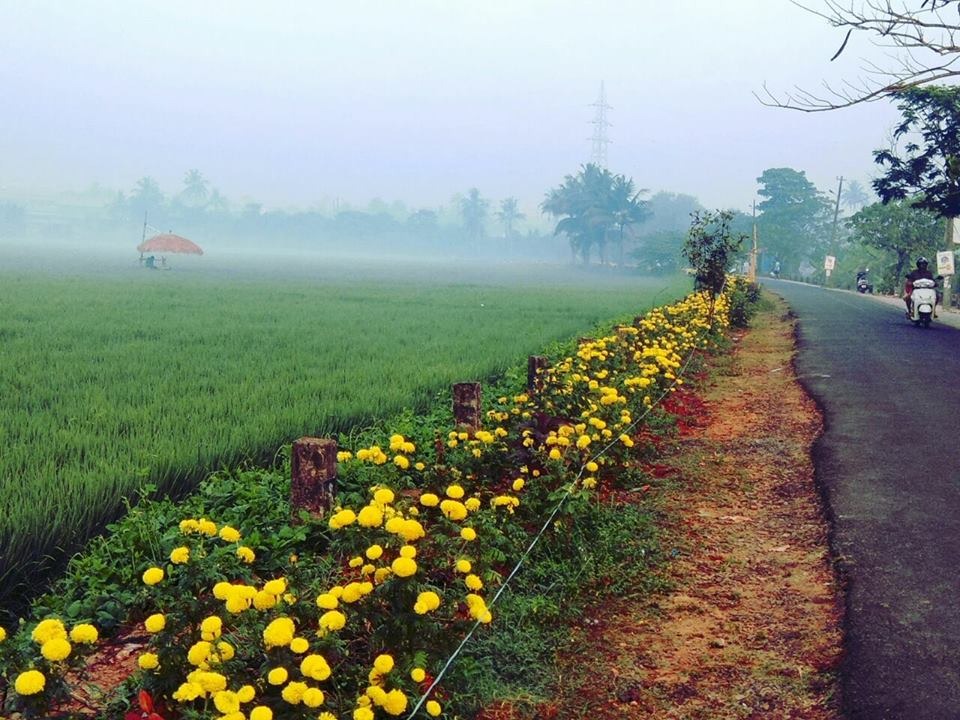
1) The group travelled to Bengaluru to collect the seeds of a particular variety of marigold which bears large flowers and planted them in a stretch of 2.5 kilometres around the paddy field.
2) The seeds were planted in such a way that the plant would flower just as the paddy enters the milky stage which is the time when the grain fills up with a sweet milky juice, and the paddy becomes more prone to pests. During this stage, the marigold would attract pests, thereby saving paddy.
3) In the inner circle of the border of the marigolds, they planted three rows of cowpea plants. At the milky stage, these became food for the rats and rodents that also tend to raid the paddy field.
This biological control experiment was a huge success. The marigold attracted a lot of spiders which trapped swarms of pests.
You May Also Like: Rattled by Farmer Suicides & Health Issues, Telangana Village Turns 250 Acres Organic!
So then, is the process of growing paddy organic, we ask them?
“We can not claim to be fully organic. There were practical difficulties in turning the toxic wasteland into a fully organic farm. Moreover, none of us knew nothing about agriculture. Except for two, all our teammates come from non-agrarian families. However, we ensured that no chemical fertiliser was used. We conducted soil tests, and as per the recommendations of the test, we added boron, zinc, and magnesium as required. Our rice was sold with the tag pesticide-free.”
Impact
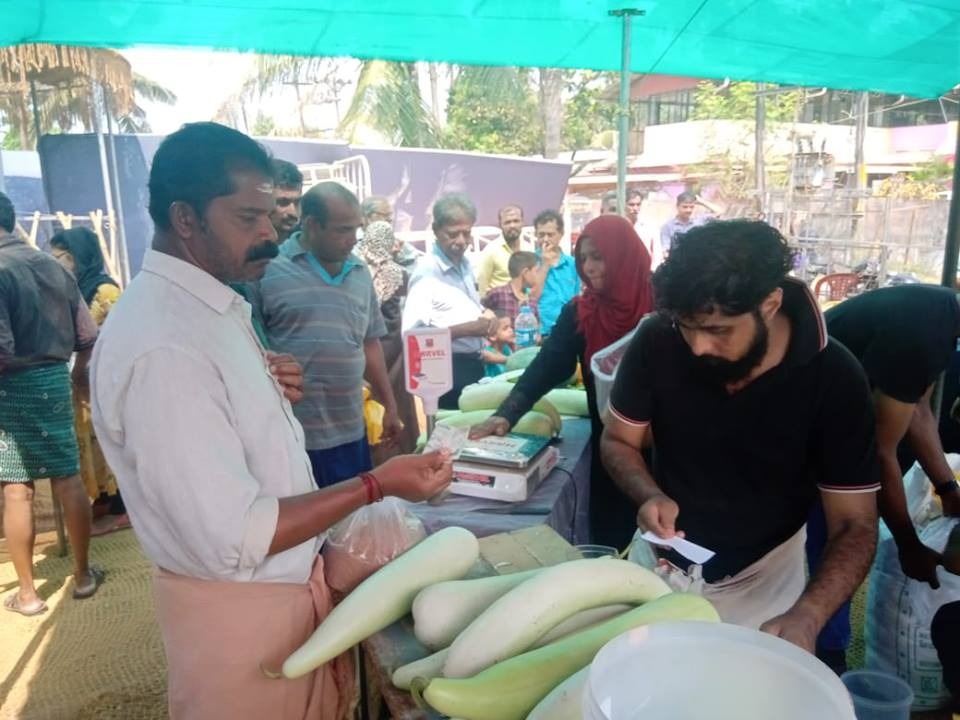
The people who once covered their faces to escape the stench of the wasteland, now come with their families to enjoy the abundant evening breeze.
“The groundwater reserve was purified, an achievement that wouldn’t be successful even with crores spent on mechanical filtering processes. We could revive the natural trickles that replenish the wells in the locality. Apart from the agricultural mission, we embarked upon, we have achieved what is most important for life —safe water!”
If this story inspired you, get in touch with Adayalam on [email protected]
(Edited by Gayatri Mishra)
Like this story? Or have something to share?
Write to us: [email protected]
Connect with us on Facebook and Twitter.
If you found our stories insightful, informative, or even just enjoyable, we invite you to consider making a voluntary payment to support the work we do at The Better India. Your contribution helps us continue producing quality content that educates, inspires, and drives positive change.
Choose one of the payment options below for your contribution-
By paying for the stories you value, you directly contribute to sustaining our efforts focused on making a difference in the world. Together, let's ensure that impactful stories continue to be told and shared, enriching lives and communities alike.
Thank you for your support. Here are some frequently asked questions you might find helpful to know why you are contributing?


This story made me
-
97
-
121
-
89
-
167




